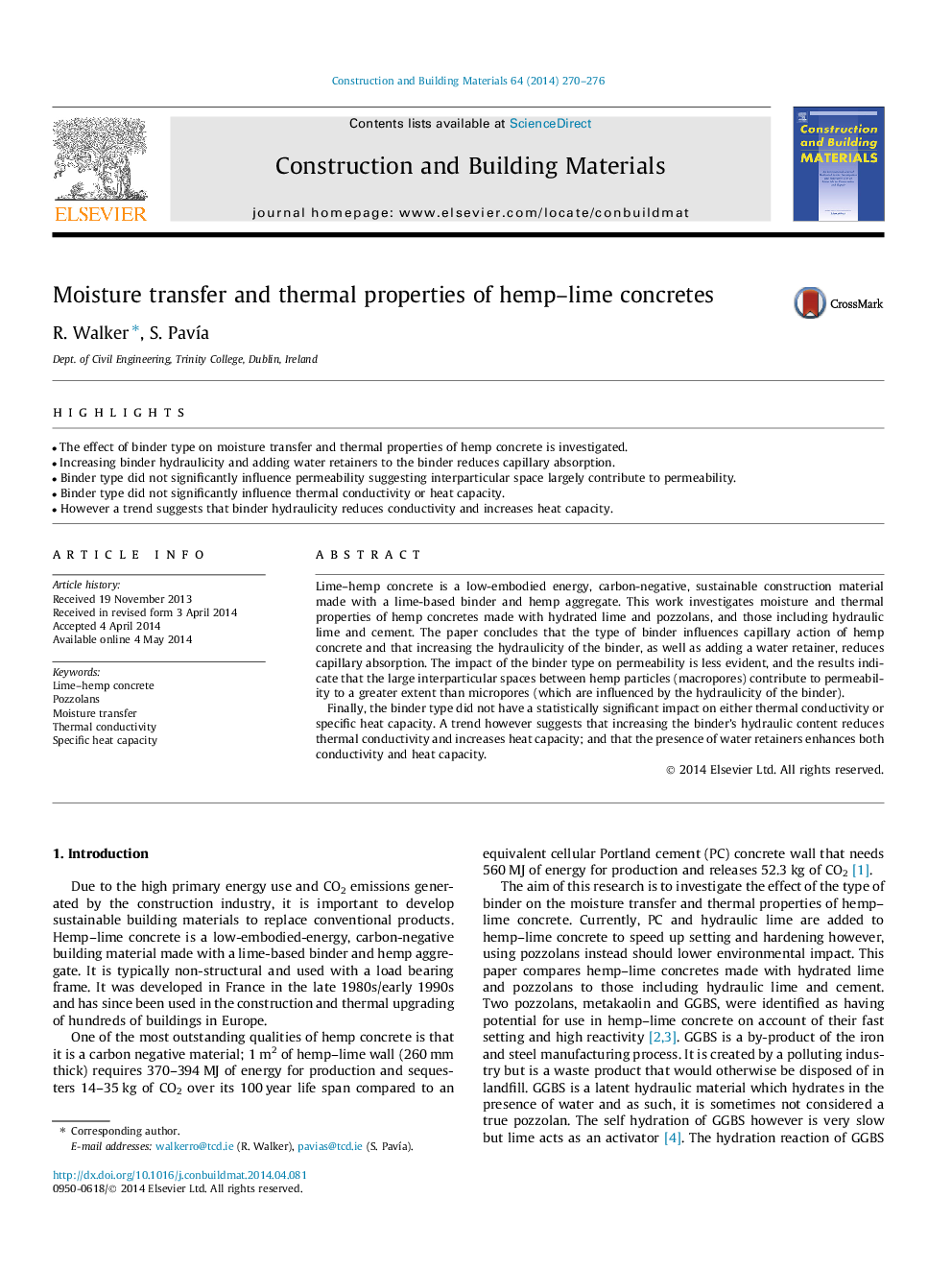| Article ID | Journal | Published Year | Pages | File Type |
|---|---|---|---|---|
| 257602 | Construction and Building Materials | 2014 | 7 Pages |
•The effect of binder type on moisture transfer and thermal properties of hemp concrete is investigated.•Increasing binder hydraulicity and adding water retainers to the binder reduces capillary absorption.•Binder type did not significantly influence permeability suggesting interparticular space largely contribute to permeability.•Binder type did not significantly influence thermal conductivity or heat capacity.•However a trend suggests that binder hydraulicity reduces conductivity and increases heat capacity.
Lime–hemp concrete is a low-embodied energy, carbon-negative, sustainable construction material made with a lime-based binder and hemp aggregate. This work investigates moisture and thermal properties of hemp concretes made with hydrated lime and pozzolans, and those including hydraulic lime and cement. The paper concludes that the type of binder influences capillary action of hemp concrete and that increasing the hydraulicity of the binder, as well as adding a water retainer, reduces capillary absorption. The impact of the binder type on permeability is less evident, and the results indicate that the large interparticular spaces between hemp particles (macropores) contribute to permeability to a greater extent than micropores (which are influenced by the hydraulicity of the binder).Finally, the binder type did not have a statistically significant impact on either thermal conductivity or specific heat capacity. A trend however suggests that increasing the binder’s hydraulic content reduces thermal conductivity and increases heat capacity; and that the presence of water retainers enhances both conductivity and heat capacity.
